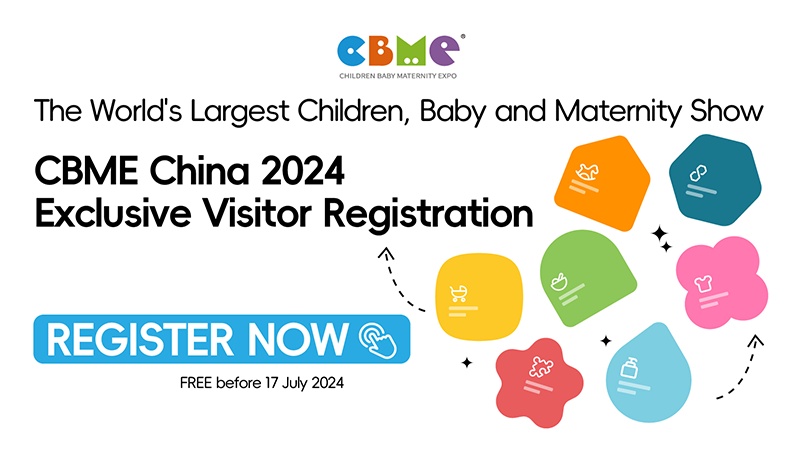
The concept of self-care consumption and meeting consumers’ emotional values is not new today. However, in practices, this concept was often simply equated with product aesthetics, fragrance, and service experience.
In fact, catering to the demand for self-care consumption encompasses these aspects but is far more extensive.
How to seize the wave of “self-care consumption” and drive growth for maternity and baby industry? There are some useful suggestions for practitioners in the maternity and baby industry organized by CBME.
Personalization and Differentiation
1) Product stratification
Generation Z undoubtedly pursues personalized and differentiated needs. Product stratification, service classification, and functional tiering are all means to satisfy these demands.
Generally, products can be divided into five levels: core benefits, general product, expected product, extended product, and potential product.
Take a refrigerator as an example: the core benefit layer is refrigeration. The general product layer involves sufficient refrigeration functions and acceptable power efficiency. The expected product layer includes multiple refrigeration speeds, adjustable shelves, warranty promises, etc.
The extended product layer might feature electronic touch controls, displays showing indoor and outdoor temperatures, temperature control, and automatic adjustment modes. The potential product layer could incorporate features like silence, balanced cooling, and energy efficiency. The extended and potential product layers are often the main dimensions of commercial competition.
In the maternity and baby industry, let’s take a child’s dining chair as an example. In terms of functionality, it should not only be used as a dining tool but also as a learning chair and toy table. Materially, its cushion and backrest should be made of soft and comfortable memory foam. However, the surface of the chair should be coated with an environmentally friendly and non-toxic finish.
Furthermore, the chair should be equipped with an adjustable tray and detachable cutlery, making it convenient for parents to adjust according to the child’s growth needs. Another example is many children’s tableware today, which strives to innovate in the extended and potential product layers. Some products have strong suction cups on the bottom to prevent tipping over, and bionic handles on the sides to exercise the child’s grasping ability.
2) Service classification
Member classification management is the most intuitive manifestation of service classification. The practice of member classification management can enhance the consumer’s experience, effectively stimulate consumption. It also allows businesses to identify the consumption strength of different members and determine appropriate measures to increase their purchasing power.
3) Functional tiering
In fact, today’s consumer demand is undergoing profound changes. As a product becomes more specialized and targeted (niche and vertical), it typically becomes easier for consumers to identify and purchase.
This trend is actively being practiced in various sectors of the mother and baby industry, including products, nutrition, snacks, and more. However, there is still potential to explore new categories, products, and achieve higher market penetration by going deeper, more specialized, and more thorough.
A typical example is the emergence of wet toilet paper as a new product category. By satisfying modern consumers’ pursuit of cleanliness, convenience, and healthy living, it echoes consumers’ “self-indulgence” proposition and has continued to grow in the past three years, with an overall industry growth rate exceeding 25%.
Health and Wellness
Focusing on life and pursuing a healthy lifestyle has become one of the cores of self-care consumption. There are three aspects for maternity and baby industry regarding health and wellness.
1) Nutritional supplements
In recent years, the domestic market for mother and baby nutritional supplements has been rapidly developing, with infant and child nutritional supplements and maternal nutritional supplements performing particularly well.
Taking infant and child nutritional supplements as an example, the “2023 Insight Report on the Mother and Baby Industry” shows that nearly 70% of mother and baby families have purchased nutritional supplements in the past year. More than 80% of consumers believe that children’s nutritional supplements are necessary, and 90% of parents spend 200 RMB or more per month on children’s nutritional supplements.
2) Maternal and Infant Products with Health Ingredients
Undoubtedly, ingredients related to health, hygiene, or antibacterial effects have always been very important factors that affect the decision-making of the consumers. However, there are still opportunities for innovation in some categories, such as the cosmetic needs of pregnant women.
In recent years, with the awakening of women’s self-care consciousness and awareness of their own value, an increasing number of mothers-to-be have expressed their determination to continue wearing makeup during pregnancy. “Health, happiness, and beauty” coexist as the main pursuits of future consumption investment among mother and baby groups.
The report shows that 40% of mothers-to-be indicated that they would continue to wear makeup during pregnancy, with first-tier city and post-90s mothers-to-be paying more attention to purchasing cosmetics and skincare products without additives, with an average consumption of up to 2,506 RMB.
3) Healing products
Products that meet consumers’ mental health needs are the “healing products.” This also constitutes a separate key point.
Emotional Value
Today, the healing economy that caters to consumers’ emotional value is becoming increasingly prevalent. From October to December in 2023, the interaction of topics related to the “healing economy” on major media platforms reached 130 million times, increasing 63.43% from the previous month, with 1.3 million posts.
In addition, according to the report by the Global Health Institute, the healing-related economy will grow at an annual rate of about 10%, and by 2025, the market size of the healing economy will reach 7 trillion US dollars.
Healing economy refers to that consumers obtain different emotional feelings beyond the product itself through purchasing a certain commodity, such as expectation, surprise, love, and desire for protection. On the other hand, consumers can gather into circles and connect with social media by consuming certain types of products.
Currently, the importance of emotional value in influencing consumer decision-making is constantly increasing. For example, Jellycat, which has become very popular in recent years, has made consumers “addicted” by satisfying their emotional value, not only gaining a large fan base but also forming a “Jellycat Addiction Support Group” on social media platforms for those who want to quit buying Jellycat.
Brand expert Sue once made a vivid analogy that brands need to become a TV series that turns consumers into drama watchers. Obviously, Jellycat has made this theory a reality.
In addition to addiction, grasping consumers’ emotional value points also includes convenient services, reflected in purchase paths, logistics, returns and exchanges; the appearance, scent, and other external factors of the product; and the aforementioned elements of healing consumers’ physical and mental health.
Empowering Consumers
The book The Rise of Empowered Consumers names Generation Z as a generation that focuses on customer needs and rights awareness, namely empowered consumers. Consumers’ exploration of new consumption experiences points to tribal consumption on the one hand. That is, consumers not only want to purchase and consume goods, but also like to share the entire consumption and experience process with others.
In recent years, the rapid rise of the Xiaohongshu (Little Red Book/Red) platform has principally matched the demand for tribal consumption. As early as the beginning of 2023, Xiaohongshu (Little Red Book/Red) officials announced that the daily number of notes posted on the platform exceeded 3 million.
In addition, 60% of users search frequently on Xiaohongshu (Little Red Book/Red) every day, with nearly 300 million daily search queries. “Xiaohongshu (Little Red Book/Red) has become an entry point for ordinary people’s lives.”
On the other hand, Generation Z consumers prefer brands that truly respect their thoughts and inner selves. They not only purchase their products but also participate in brand interactions, trying to drive and improve the brand. This manifests as the entire process of “consumption-interaction-creation.”
Nowadays, many brands and manufacturers have realized this. For example, some maternity and baby brands are promoting the activity of “recruiting experience officer.” In addition to free new product trial qualifications and other benefits for selected experience officers, they can also receive exclusive certificates for experience officers. This way, users can participate in brand building.
Keywords:
| Maternity & Baby Industry[1] |
| CBME child baby maternity one-stop trade fair[2] |
| CBME global sourcing hubs for maternity and baby products[3] |






